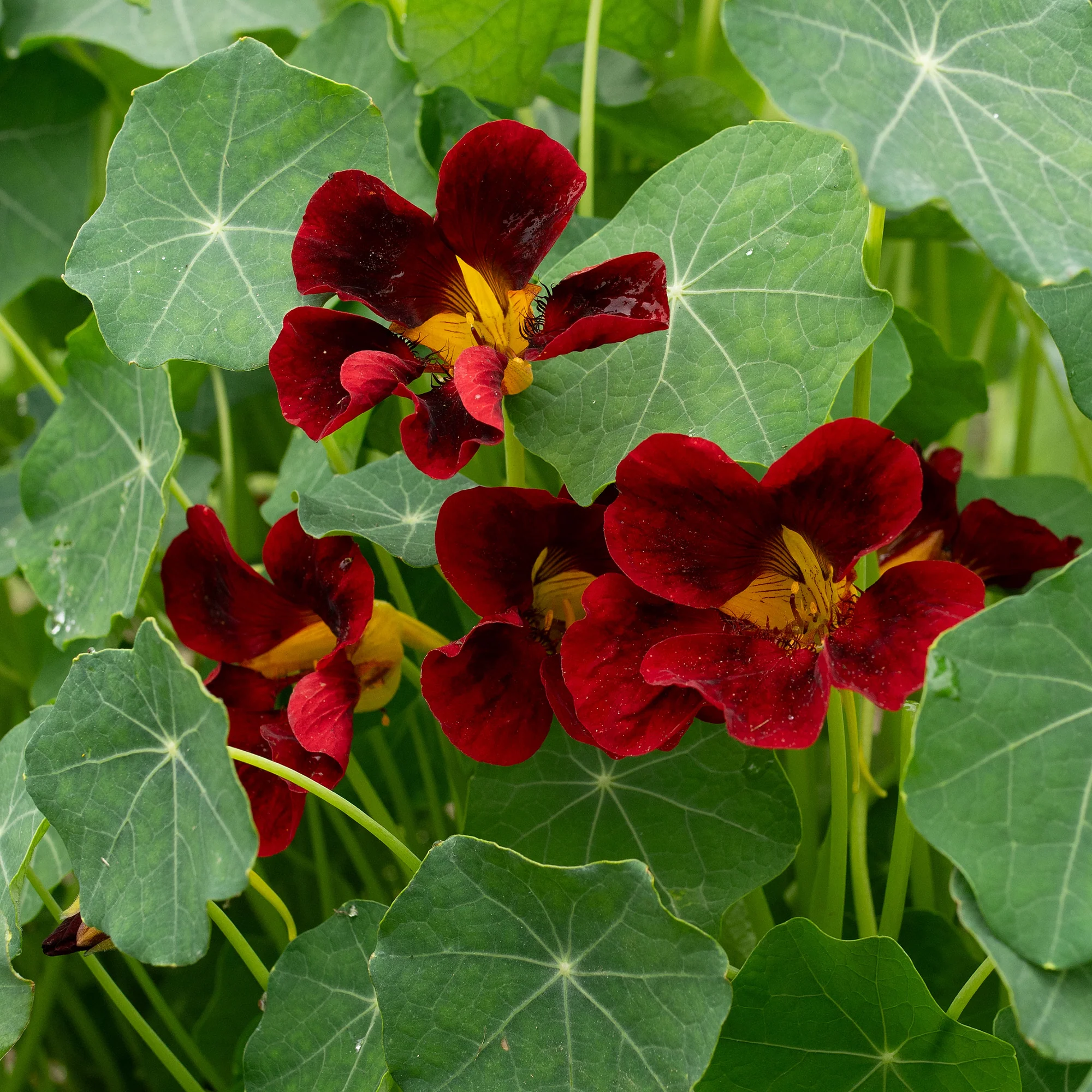I never imagined myself planting flowers in my garden, but discovering the benefits of growing nasturtiums changed my perspective. Here I am, and I’m loving it! What started as a small experiment quickly turned into a passion when I learned about the many benefits flowers can bring to a garden. Certain types of flowers do more than add beauty—they can repel pests, attract pollinators, and even improve your garden’s health.
Today, I want to shine a spotlight on one of my favorite garden companions: nasturtiums.
Why Nasturtiums?
Nasturtiums are not just pretty faces; they are hardworking plants that bring a lot to the table. Last year, I grew a few nasturtiums in small flower pots, and while I loved their vibrant, cheerful blooms, their size stayed modest. This year, I decided to give them a bit more room to stretch out, so I planted them in my raised beds alongside peppers and kabocha squash.
What a difference space makes! In total, I have about eight nasturtium plants scattered across my beds, and they’ve absolutely flourished. Their growth has been so vigorous that I’ve had to cut them back a few times to prevent them from overpowering neighboring plants. But is that necessarily a bad thing?

Nasturtiums and Pest Control
One of the benefits of growing nasturtiums is their ability to act as a natural pest deterrent. Last year, my kabocha squash fell victim to the dreaded squash vine borer. This year, I took precautions, including laying straw mulch around the base of the plants. However, the nasturtiums seem to have taken pest prevention to the next level by sprawling across the base of the squash plants.
Could their lush growth be part of the reason pests might steer clear? It’s a question I ponder every time I walk into my garden. Nasturtiums are known to act as “trap crops,” attracting harmful pests like aphids away from more vulnerable plants. At the same time, their bright flowers invite pollinators, creating a thriving mini-ecosystem right in my raised bed.

A Pleasant Surprise: Nasturtiums Are Edible!
Here’s something I didn’t know when I first planted nasturtiums: they’re edible! Both the flowers and leaves have a peppery flavor that makes a great addition to salads and other dishes. It’s like growing beauty and flavor all in one.

How to Grow Nasturtiums
If you’re considering adding nasturtiums to your garden, they’re incredibly versatile. You can start them indoors or sow them directly into containers, raised beds, or garden soil. They’re easy to grow and rewarding for beginners and experienced gardeners alike.

Final Thoughts
Nasturtiums have completely won me over. They’re beautiful, beneficial, and surprisingly resilient. While I’m still learning about their full potential, I’m excited to see if their presence helps protect my squash plants from pests this year. If you’re looking to enhance your garden the benefits of growing nasturtiums cannot be overstated.

Have you grown nasturtiums before? Share your experiences—I’d love to learn more about how these fascinating flowers have impacted your garden!


Leave a Reply